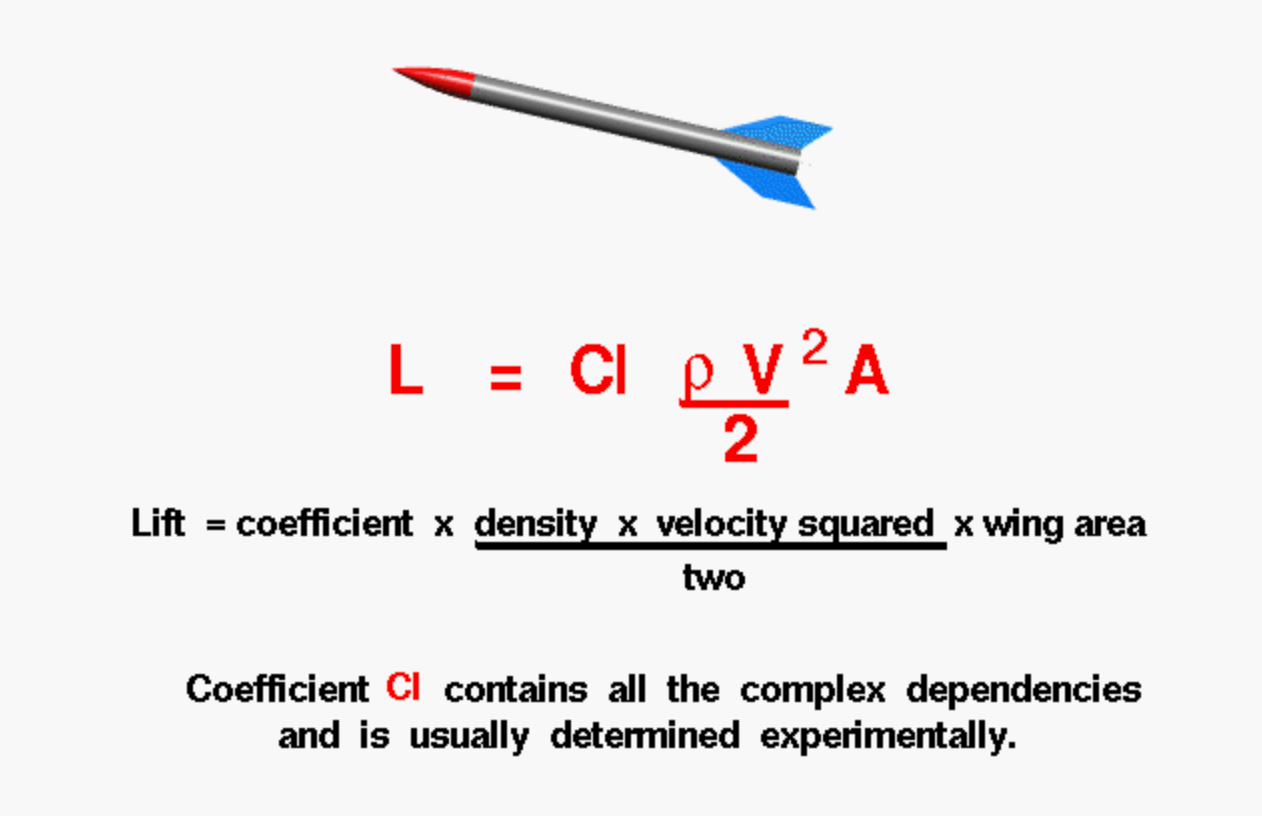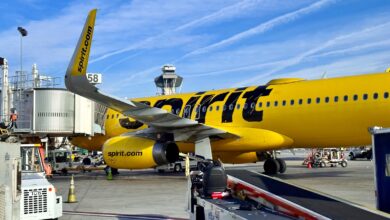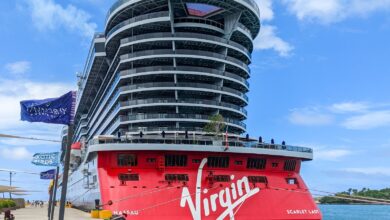Can the weather get too hot to fly a plane safely? A pilot explains
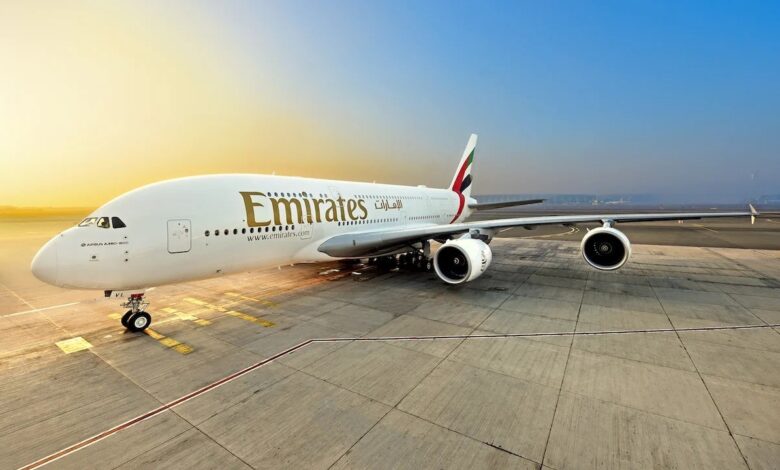
Temperatures are currently soaring across the U.S. South, with little expected relief ahead of the Fourth of July holiday.
Texas alone has seen record-high forecasts of temperatures around 110 degrees. The heat wave has come hot on the heels of several destructive storms that put severe pressure on the region’s energy grid and left thousands without power.
Weather experts expect the heat wave to expand further north into Missouri, the Mississippi Valley, Oklahoma, the western Florida Panhandle and western Alabama. As of last Saturday, more than 40 million people in the U.S. have been placed under a heat alert.
And the heat, combined with typical summer storms, is already affecting travelers. For example, when traveling recently on an Embraer 175, TPG’s Summer Hull and her two kids volunteered to receive $1,000 in future travel credits each as the plane was overweight for its trip from Houston’s George Bush Intercontinental Airport (IAH) to New York’s LaGuardia Airport (LGA) due to weather-related weight and balance issues.
Make no bones about it, this year’s Fourth of July celebrations are going to be hot, with an increased likelihood of more storms and heat-related travel disruptions.
For those without air conditioning, these temperatures can be extremely difficult to live with. The commute to work becomes more stressful, and it might be nearly impossible to sleep at night. All in all, it’s not a pleasant experience.
Not only do hot days affect how we work and sleep, but they also affect the aircraft that we fly on.
Air density
We’ve all heard the phrase “hot air rises,” but what does this actually mean and how does it affect your flight?
The air around us is composed of various particles, and, for the most part, it consists of 78% nitrogen, 21% oxygen and 1% various other gasses (such as carbon dioxide and water vapor). These molecules of air bounce around the place like balls in a lottery machine, taking up as much space as is available to them. This is known as the atmosphere.
As the temperature increases, the atoms within these molecules get excited and start to move around more. The hotter they get, the more they move and the farther apart from each other they become — making the air less dense. Conversely, the colder the air becomes, the less excited the atoms are and the denser the air becomes, which makes it sink lower.
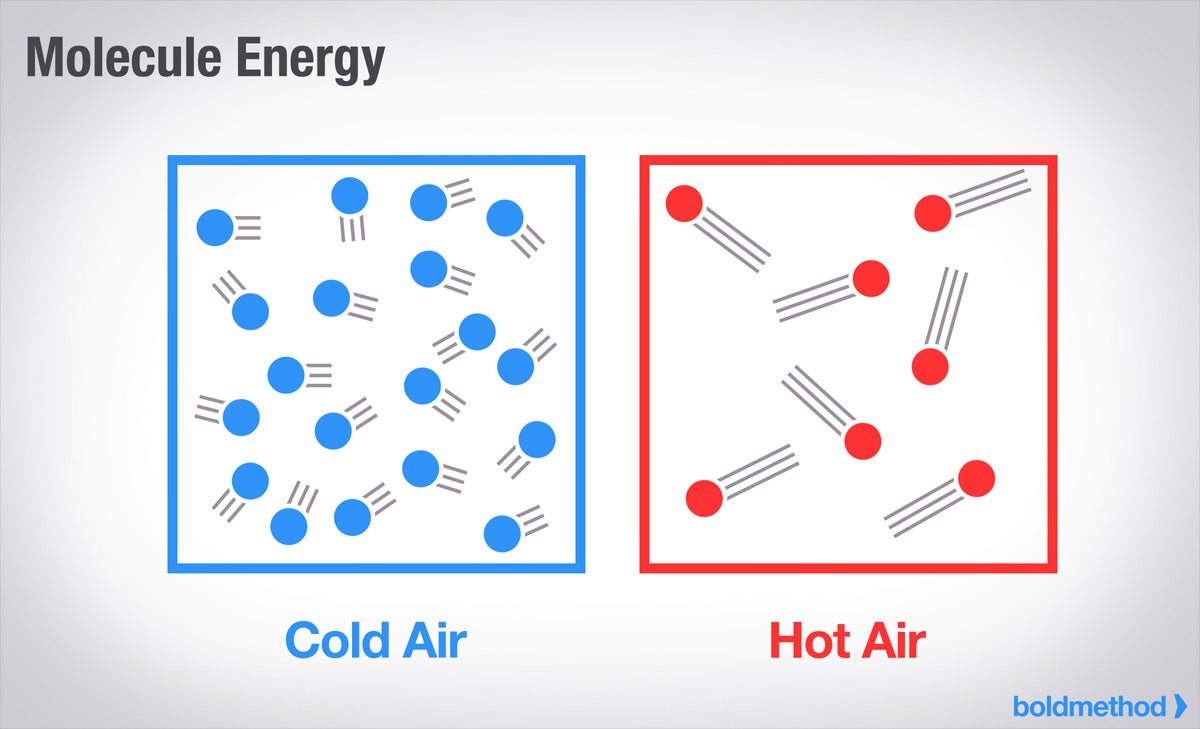
On a typical day, as the sun heats the ground and the air above it, the temperature of that air mass increases. This causes the air molecules to increase their movements and rise into the sky, reducing the air pressure as the density reduces. The hot air becomes “thinner” and therefore rises.
As the hottest part of the day passes and the air begins to cool, the molecules become less excited and sink back down toward the earth, increasing the density and, consequently, the air pressure. The same mass of air is now much heavier than it was during the hottest part of the day.
How aircraft fly — a quick refresher
So why does the air density matter for aircraft? Well, contrary to common belief, aircraft fly not because of their engines but because of their wings.
As air flows over the wings, it creates a difference in pressure between the lower and upper surfaces. (There is lower pressure on top and higher pressure underneath.) It’s this difference in pressure that causes lift. When the lift generated by the wings becomes greater than the weight of the aircraft, the aircraft can leave the ground and fly.
For the math-minded among you, the formula for lift is …
Therefore, the amount of lift produced depends on the speed of the air over the wing, the density of the air and the wing area.
The engines are there to provide the forward movement the aircraft needs to drive the air over the wings. During the takeoff run, the engines accelerate the aircraft forward, forcing air over the wings. Because the amount of lift generated is partly determined by how fast air flows over the wings, once the aircraft reaches a certain speed, there will be enough lift to become airborne.
It’s for this reason that aircraft won’t simply fall out of the sky even if both engines fail. If that incredibly rare event were to happen, the pilots would simply lower the nose slightly and use gravity to keep the air flowing over the wings, creating lift. This will give a glide ratio of roughly 3 miles for every 1,000 feet above the ground; this means an aircraft at 43,000 feet can glide for around 130 miles.
How air density affects aircraft
So now that we know a little about how aircraft fly, we can begin to understand how the air temperature affects them.
As I mentioned, the amount of lift generated depends on a number of factors in the lift equation, including the speed of the air over the wing and the density of that air.
Related: The challenges for pilots when landing at hot and high airports
We’ve already agreed that on a cold day, the air is more dense, and the molecules fall lower and pack in tight together. As this air flows over the wing, there are many air molecules passing over the surface, creating the perfect conditions for lift.
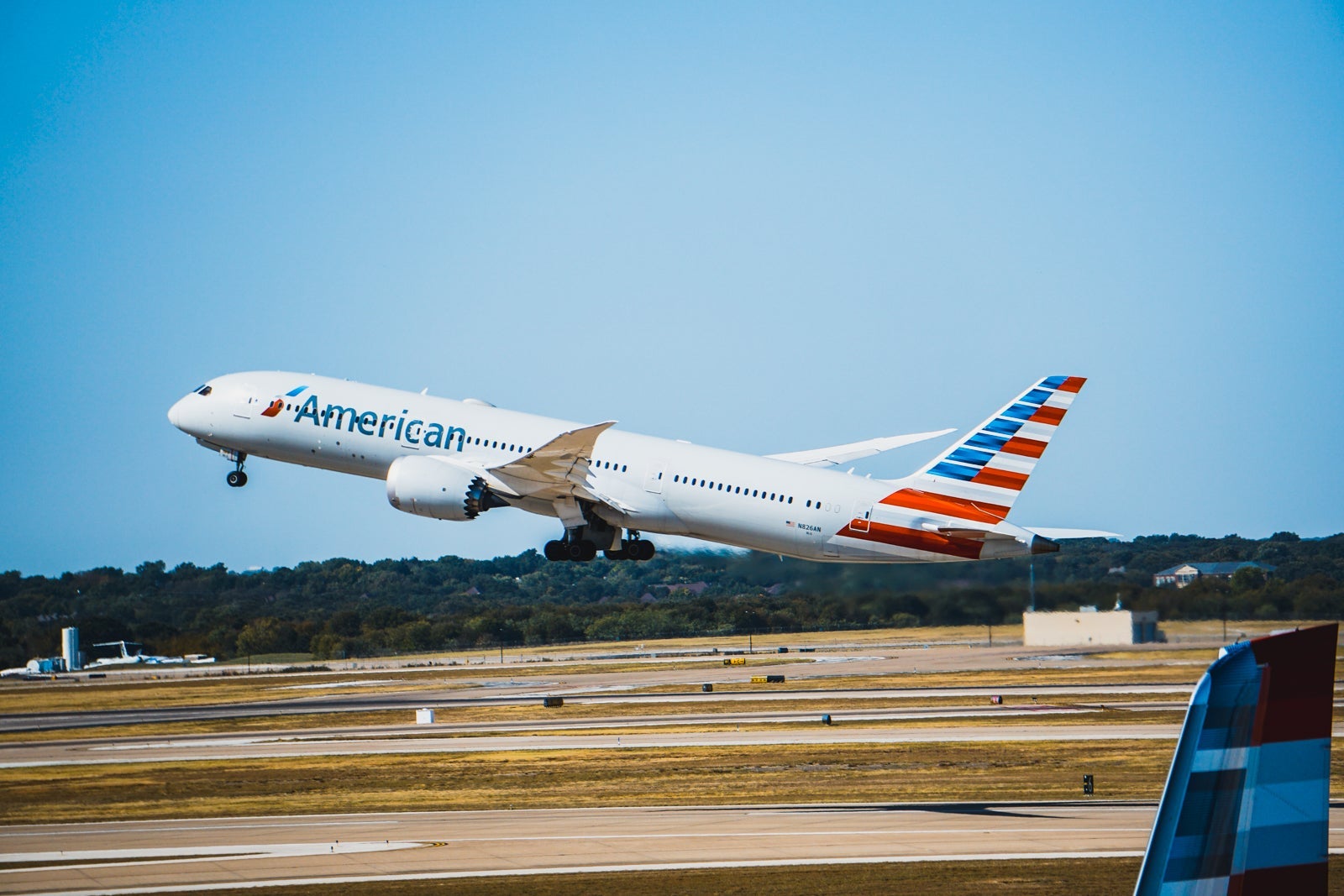
However, on a hot day, the air is much less dense. As a result, when that hot air passes over the wing, there are far fewer air molecules near the surface, which reduces the amount of lift created.
This difference is why pilots prefer to fly on cold (dense air) days rather than hot (less dense air) days. Not only do the wings generate more lift at a given speed, but the aircraft “bites” the air much better and is more responsive to control inputs.
What if it gets too hot?
We’ve seen that on a hot day it’s more difficult for wings to generate lift than on a cold day. When temperatures reach 86 degrees and above, this has a noticeable effect on aircraft performance.
So what can we do if the air density decreases, but we want to keep the lift generated the same? One option is to delay the flight until the air temperature decreases. It’s for this reason that many ultra-long-haul flights depart late at night when the air is the coolest.
However, delaying a flight due to high temperature isn’t ideal. With that in mind, there are two other variables in the formula — the area of the wing and the speed of the air over the wing.
Make the wing bigger
The first option is to make the wing bigger. Even though this may seem like an unrealistic idea (how can you just make it larger?), it’s not as unrealistic as you may first think.
When you first board an aircraft and can see the wing, it looks pretty smooth and sleek. However, just after the engines start, a loud whirring noise comes from under your feet and the surfaces on the leading edge and trailing edge of the wing move outward.
By extending the slats (leading edge) and flaps (trailing edge), we can increase the aerodynamic surface area of the wing, giving us a higher value for our lift formula. For takeoff, most commercial aircraft set the flaps to around a 5-degree extension.
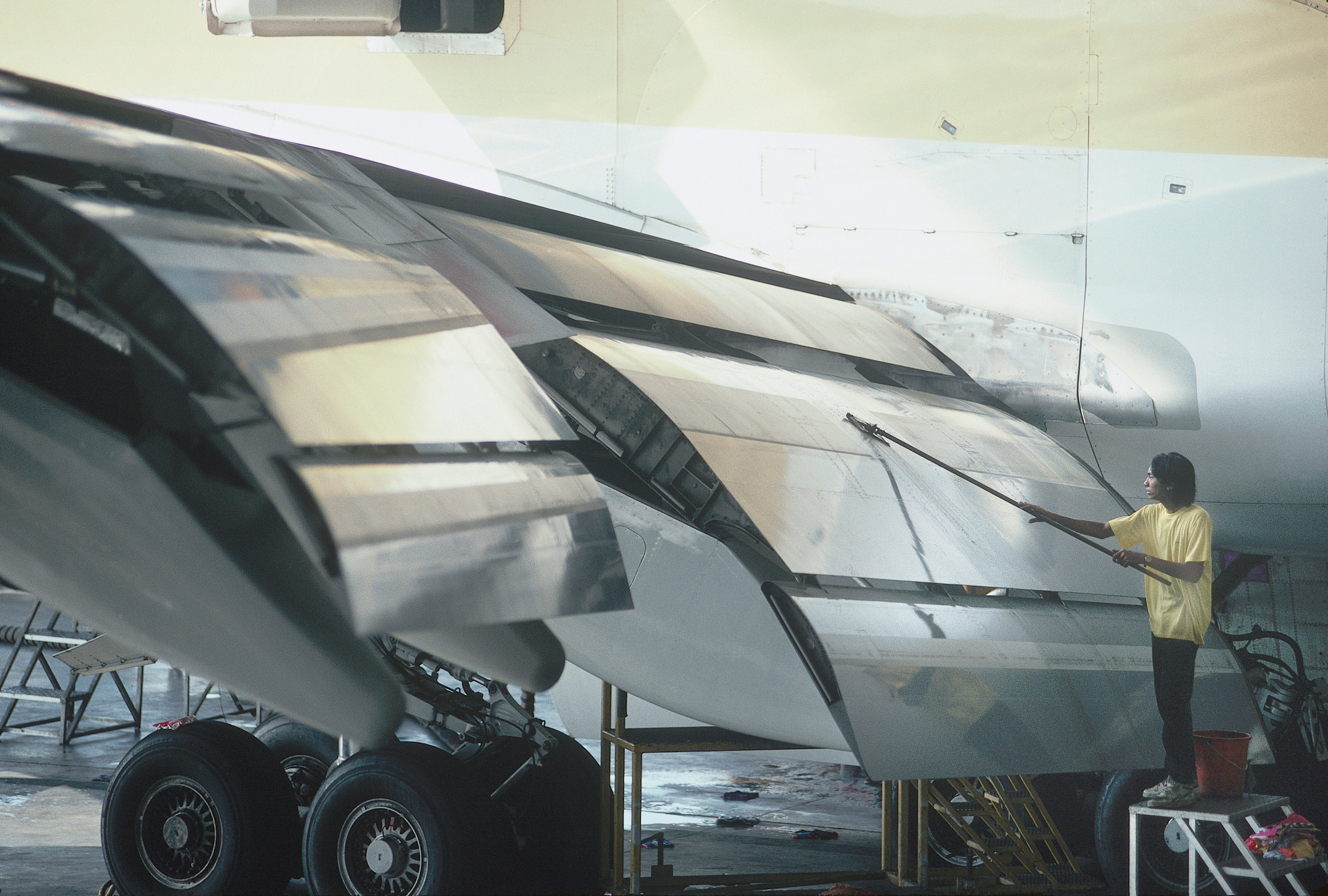
They can go up to around 30 degrees — a measurement used for landing. Since increasing the wing area will create more lift, one option is to use a greater flap setting and increase the area of the wing.
While this is a solution, it’s important to note the more flap you use, the more another factor comes into play — drag.
Drag is the aerodynamic force that slows an object down. The more an object is “hanging out” into the oncoming wind, the more drag it has. This is why sports cars and fighter jets have low, sleek profiles.
Related: No, your flight didn’t go supersonic. That was just really fast wind
If we use more flap to increase the surface area of the wing, there’s a point where the drag generated becomes a bigger problem. The more drag there is, the faster the plane has to fly to overcome the extra force, reducing the lift generated.
Go faster
Using extra force to generate more lift works but is hugely inefficient. The other option is to simply increase the speed of the air over the wing. There are two ways to accomplish this.
The first is to take off into a strong head wind. If an aircraft needs an airspeed of 100 mph over the wings and you angle it into a 100 mph wind, the aircraft will become airborne even if it is stationary compared to the ground.
In the video below, the small aircraft needs very little air over its wings to become airborne. So little, in fact, that during a storm, bad weather can generate winds strong enough to meet these criteria. The result? Any aircraft that isn’t tied down can very quickly relocate to another area.
However, because most commercial airliners need airspeeds of around 180 mph to become airborne, and the lift generated by wind alone will only make up maybe 30 mph, the other 150 mph must be generated by the engines.
Another little-known fact is that we rarely take off with our engines at full power. This is because it uses a lot of fuel, increases the amount of maintenance needed, and is noisy for those living and working around the airport. As a result, we try to get airborne using as little engine power as safely possible.
To do this, we calculate just how much engine power we need before each departure by considering all the variables — air temperature, air pressure, wind speed and weight of the aircraft. By adding in the runway length available to us, we can then calculate just how much engine power we will need to reach our takeoff speed with the runway length available.
If we need to increase the speed because we can’t increase the wing area anymore and the air density is too low because the length of the runway is fixed, the only way we can do this is to increase our engine power. However, there may come a point where we are using full power but the runway isn’t long enough to reach our takeoff speed before the end.
This is why airports in hot places such as Dubai and Singapore have exceptionally long runways. When airports with shorter runways, sufficient for normal weather, go through periods of extremely high temperatures, the runway length can suddenly become a limiting factor.
When there’s not enough runway
When we’ve reached this stage, things really get challenging. We can’t increase the wing area anymore due to excessive drag, and we can’t go any faster because the runway isn’t long enough. It seems that we would be stuck as these are the only variables in our lift formula. However, there is one more element that we can change: the amount of lift required to get airborne.
We’ve already mentioned that an aircraft flies when the lift generated by the wings is greater than the weight of the aircraft. So, if we are unable to generate any more lift, the only way to still get airborne is to reduce the weight of the aircraft to a value that allows us to get safely airborne.
When loading an aircraft, the one thing we can’t change is how heavy the aircraft is when empty. What we have to do once again is look for the variables. These come in four areas: the amount of fuel we load, the number of passengers we carry, the number of bags we load and the amount of cargo we carry.
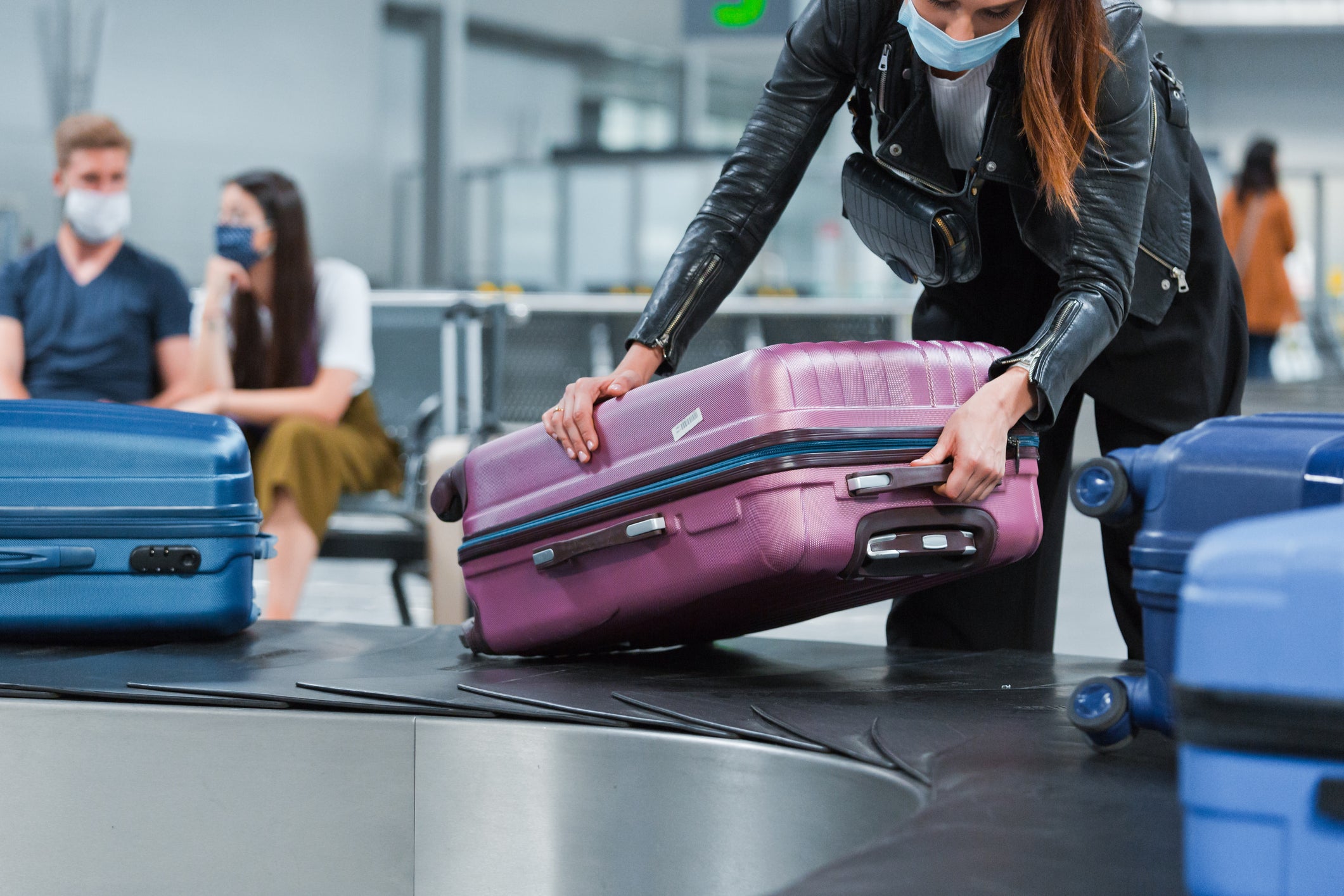
The first of these to go will be the cargo, as this can be loaded onto a later flight without much inconvenience to the customer. The next element we’ll try to change is the fuel figure; however, understandably, there is a limit to how much we can reduce this.
We may look at how much fuel we will use to taxi to the runway or how much contingency fuel we carry in case of unexpected routings or altitudes. However, realistically we only save a few hundred kilograms in weight by doing this, even on a long-haul flight.
The final variable is when airlines become really unpopular with customers — offloading them or leaving their bags behind.
Related: Runway approaching: How pilots find their way safely to the ground in all elements
Let’s be clear on this: No airline wants to leave passengers or bags behind. However, there is absolutely no way the pilots will risk taking off knowing that the aircraft is too heavy for the environmental conditions.
As a result, the only option is to either cancel the flight or offload some passengers and/or bags and send them on another flight.
Bottom line
Not only do high temperatures affect how we work and sleep, but they also have an effect on how aircraft fly. As the mercury rises, the air density changes, which reduces the performance of the lift-generating wings. Pilots have ways around this — but only up to a certain point.
Should the temperature become so hot that the pilots can’t make any further changes to their takeoff performance, the only way to get safely airborne is to either offload passengers and bags or cancel the flight altogether.
This is far from ideal, but it’s our job to keep all those on board our aircraft safe. Every so often this involves taking extreme steps.
Featured photo courtesy of Emirates.
